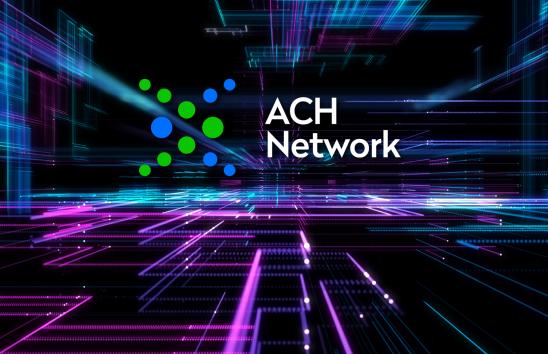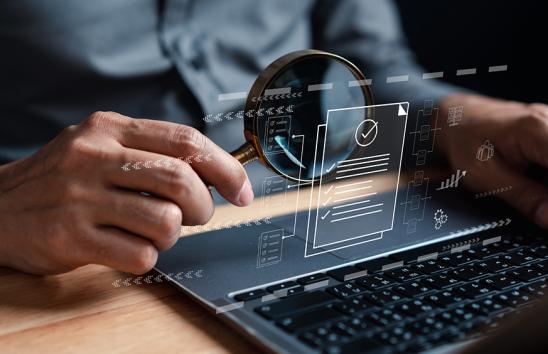RDFI Customer Service Issues for ARC Payments
On March 15, 2002 Nacha Operating Rules became effective for Accounts Receivable Entries (ARC). Under the ARC rules, a consumer check remitted to an accounts receivable location, such as a lockbox or dropbox, can be converted into an ACH debit when prior notice has been provided to the consumer. The ARC application is used for consumer bill payments.
Indications from the marketplace are that the ARC product is poised for rapid adoption by a substantial number of large billing companies. The research firm TowerGroup estimates ARC volume of 6 billion items annually by 2007; the research firm Global Concepts estimates ARC volume of as much as 7.7 billion items annually by 2007. Nacha figures show that the volume of ARC payments increased by more than 150 percent from the 4th quarter, 2002 to the 1st quarter 2003.
As a result, more consumers are beginning to experience the ARC check conversion process. For the most part, consumer acceptance has not been a barrier to the adoption of ARC. However, it is likely that some portion of consumers will contact their financial institutions with questions about these transactions. The ability to respond knowledgeably to customer inquiries will be an important contributor to customer acceptance of these transactions, as well as customer satisfaction with their financial institutions.
In general, the types of questions that customers are directing to RDFIs come in these categories:
-
Finding the transaction on the monthly account statement – The transaction will be listed in the electronic transactions section, along with other electronic debits, ATM withdrawals, Direct Deposits, etc. The name of the company to which payment was made now appears on the account statement. You should consider notifying your customers in advance where they will find these transactions listed on their statements.
-
Where’s the check? – Some customers will want to know what happened to the checks. The original check was intentionally destroyed during the billing company’s processing to prevent duplicate processing and to protect the privacy of the personal information on the check. The customer can request a copy of the check from the billing company, which is required to keep a copy for two years. As the RDFI you can also request a copy of the check from the ODFI.
-
Proving payment was made – Some customers keep canceled checks to prove a payment was made. Since the periodic account statement now has the name of the payee, it serves the same purpose. Customers concerned about proving that certain payments were made can be advised to retain their periodic account statements.
-
Privacy – Some customers may be concerned that the check conversion process gives the billing company the ability to access their account in real-time or to determine their account balance. RDFIs can advise customers that this is not the case, that the payment is simply being processed similar to the way an employer processes a Direct Deposit rather than a paycheck. They can also be advised that their rights are protected if they review their periodic account statements and report any suspicious activity.
There is one other potential issue with an ARC transaction that impacts a consumer in a way that the other ACH e-check transactions do not. It is a reality that not all consumers review their billing statements, and therefore there may be a portion of consumers who do not read the notifications from billing companies that authorize the ARC transactions. This is different from the other ACH e-check transactions; with the Point-of-Purchase (POP) transaction, the consumer gets his or her check back and signs an authorization; in an Internet-initiated (WEB) or telephone-initiated (TEL) e-check transaction, the consumer provides the routing and account number, rather than presenting the actual check to the merchant or biller. In these three transaction types, it is far less likely that the consumer will have missed reading or reviewing the authorization notification.
Customers with questions about the authorization can be advised that notice was likely provided on the billing statement, and that the customer should contact the billing company for more specific information. Customers can also be directed to contact the billing company for any questions about their billing statements, and about whether the billing company allows an opt-out of the check conversion process. As noted above, the customer can request a copy of the original check from the billing company, which is required to keep a copy for two years.
Since these customer inquiries will be come to RDFIs through normal customer service channels– branches, call centers, web sites – a customer service staff well trained in the basics of the ACH Network is therefore more critical now than ever before. The implementation of a training program for customer service personnel that includes ACH Network fundamentals represents an investment with results that flow directly to the bottom line. Fortunately, the opportunities for such training are plentiful. Please refer to the attached information on training opportunities.
Accounts Receivable Entries (ARC) Additional RDFI Resources
Nacha Article - Arm Your Front-Line Staff With ACH Training
The Automated Clearing House Network isn’t just about Direct Deposit anymore. New e-check applications for non-recurring consumer debits are now available in the marketplace and are being adopted by financial institutions, merchants, billers and consumers. With the expansion of the Network to these applications, financial institutions are fielding more and more customer inquiries in their branches and call centers. A customer service staff well trained in the basics of the ACH Network is therefore more critical now than ever before.
ACH Training – Payments Associations
A good place to contact regarding ACH training is a Payments Association. Payments Associations across the country assist financial institutions in understanding and complying with the many issues and rules involved in ACH transactions.
Federal Reserve Board Brochure - “When Is Your Check Not a Check? Electronic Check Conversion”
Other consumer informational resources on e-checks are also available. The Federal Reserve Board has published a brochure entitled “When Is Your Check Not a Check? Electronic Check Conversion,” which is posted on the Federal Reserve Board’s consumer information page. Print-ready files can be downloaded from this site.
Federal Trade Commission Consumer Information
Answers to RDFI Customers’ Frequently Asked Questions
Q. What is electronic check processing? What is an electronic check?
A. With electronic check processing, you continue to send in a check like you always do, but the company processes it electronically in much the same way that it pays its employees by Direct Deposit instead of checks. You may hear this electronic processing called “check conversion”, “electronic check”, or “e-check.”
Q. How does electronic check processing work?
A. The company that is billing you is required to notify you in advance if it is going to process your check electronically. The payment will be deducted from your account in 1-2 business days after the company receives it, and will be listed on your periodic account statement. You’ll be able to identify the transaction because you will see the company’s name.
Q. What happens to my check?
A. The company you send it to is required to destroy the original check to prevent duplicate processing of the check after processing it electronically. The company is also required to keep a copy of the check for 2 years, and to provide it to you on request.
Q. How do I prove I made a payment?
A. With electronic check processing, the name of the company you pay will now appear on your periodic account statement. This serves as proof of payment. You should retain the account statement if you believe you will need to show proof of payment.
Q. How will an electronic check transaction appear on my account statement?
A. The transaction will be listed in the electronic transactions section of your account statement, along with ATM and debit card transactions as well as any Direct Deposits. (Note to RDFIs: If you list transactions differently than described in this answer, substitute your own information.)
Q. Is this safe?
A. Absolutely. Electronic processing only permits the billing company to initiate a single payment. It does not allow the company to check your account balance, and it does not allow any other company to access your account. There are also Federal regulations that provide significant consumer protection for electronic payments. For a number of good reasons, you should always review your periodic account statements, and notify us of anything that appears to be an error or an unauthorized transaction.
Nacha CONTACTS
Questions about this ACH Operations Bulletin should be submitted via [email protected].



